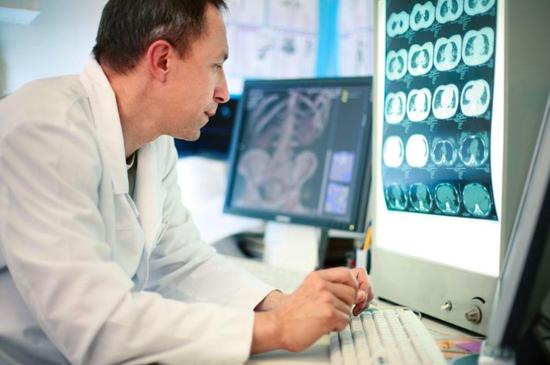In the research and development process, Dr. Chen used the experience of doctors to judge the size of the patient's lesions, the relationship with the surrounding ducts, the severity, the feasibility of the surgical plan, and other issues in the medical image processing technology. Standard 2D/3D graphics interaction engines and other breakthrough technologies involving multiple disciplines have achieved breakthroughs in the identification and reconstruction of hepatobiliary, spleen, duodenum, stomach, tumor, urinary and multiple blood vessels, virtual surgery planning, and surgery. Aseptic medical image display and control functions. The use of more than 40 famous triple-A hospitals, including the Beijing 301 Hospital, saved more than a thousand patients with suspected hepatobiliary pancreatic and renal surgeries. The following is the sharing of Dr. Chen Yongjian in titanium confession: Now people go to the hospital to see the doctor. If the condition is a bit more complicated, the doctor will let him take a picture. For example, the picture below is a CT. The film is made of CT and NMR. In the past, the common X-rays were rare and changed to digital DR. These are the body shots of individual patients and are abstract. In modern medicine, doctors use these advanced imaging equipment and laboratory test data to diagnose diseases. The interpretation of these abstract images requires doctors to undergo professional training for many years. General imaging physicians are trained in schools for five years, and they have to train in the hospital's imaging department for many years to have independent diagnostic capabilities. And clinicians now also require the ability to read these films because clinicians are the makers of surgical plans. In many video reports, we can see that some difficult diseases are actually very ambiguous. Most of them write "suspicious" rather than "definitive". These are the final diagnoses of clinicians based on their own experience. This poses a problem: The better the education, the more experienced the doctors are, the more accurate the doctors are, so everyone is willing to go to a famous hospital to find a famous doctor. However, the resources of so many people in our country, good doctors are limited. It is impossible to achieve the best diagnosis for everybody and the current diagnosis depends on the doctor's experience. The artificial intelligence technology relying on deep learning and big data analysis can perfectly solve these problems, and even the diagnostic effect is better than the most experienced doctors. Case: artificial intelligence assists in determining liver surgery Let's reanalyze the film above. This is an image of a person's abdominal liver tumor. If someone with medical experience can see that there is a malignant tumor in the liver, and under the enhanced contrast, can see the blood vessels, tumors and some of the relationships between them. The problem now is that the tumor needs to determine the surgical plan. The doctor needs to clearly know the boundary of the tumor, whether it is oppressed or invaded with the blood vessel, or just licking it, which will lead to different surgical plans. This depends on the doctor's reading ability and past experience to make judgments. If you judge the wrong disease, it is not good. 1. Electrical laminated wood is widely used as insulating and supporting material in transformers and instrument transformers. It has many virtues such as moderate specific gravity, high mechanical properties, easy vacuum drying, easy mechanical processing etc. The dielectric constant of this material is close to transformer oil, so it makes a reasonable insulation match. And it can be used in transformer oil of 105℃ for long time. Electrical Laminated Wood,Birch Plywood Sheets,Birch Laminated Wood,Electrical Birch Plywood Yingkou Dongyuan Electrical Insulation Board Co.,Ltd , https://www.dy-insulation.com

2. People usually use this material to make upper/lower pressure pieces, cable supporting beams, limbs, spacer blocks in oil-immersed transformers, and clamps in instrument transformers. It replaced steel plates, insulating paper sheets, epoxy paper sheets, epoxide woven glass fabric lamination in these fields, and cut down the material expenses and weight of transformers.
3. The raw materials of electrical laminated wood are high quality birch and willow timbers. After boiling, rotary cutting, drying, these timbers are made to veneers. At last the veneers will be glued with special insulating gluewater and processed under high temperature and pressure.
Hisense Medical Chen Yongjian: Rely on Artificial Intelligence Technology for Accurate Surgery
: Dr. Chen Yongjian graduated from National University of Tokushima, Japan, and served as a researcher at Harvard University. Since returning to China in 2012, he has been responsible for 3 national projects as the technical leader and presided over 1 major project of Qingdao's independent innovation. Hisense computer-assisted surgical equipment has been successfully applied in clinical research in Qingdao. 》And Qingdao City, "Science and Technology Achievements Evaluation Report" has proved to have an international advanced level, and obtained national medical device product certification.